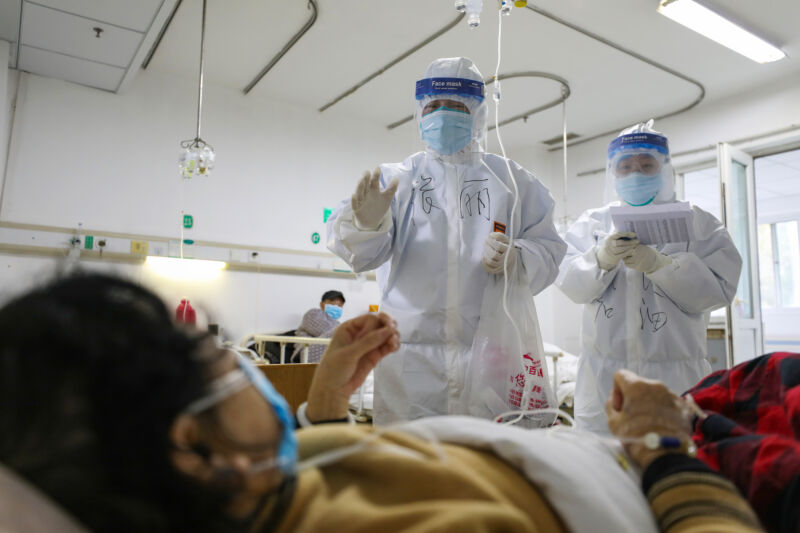
Case tallies of the ongoing coronavirus epidemic appeared to dramatically spike overnight, rising from over 45,000 global cases on Wednesday to over 60,000 Thursday. But the startling rise of nearly 15,000 cases in one day is basically “an artifact of the reporting,” officials at the World Health Organization explained Thursday.
Starting yesterday, health officials in China’s Hubei Province—the epicenter of the outbreak—began reporting the “clinically diagnosed” cases that have been tallied throughout the whole outbreak, rather than only laboratory confirmed cases.The difference is that now—in Hubei only—trained medical professionals are allowed to diagnose patients as being sick with the new coronavirus based on chest imaging, rather than waiting for lab tests to confirm an infection. The chest images can detect signs of lower respiratory infection in the lungs, a sign of the disease caused by the new coronavirus, which WHO officially dubbed COVID-19, or “coronavirus disease 2019.”
Yesterday, Hubei Province reported 13,332 clinically diagnosed cases.
But these aren’t just clinical cases that were newly identified yesterday, Dr. Michael Ryan, executive director of WHO’s Health Emergencies Program, explained cautiously. “Crucially we understand that most of these cases relate to a period going back over days and weeks and are retrospectively reported as cases—sometimes back to the beginning of the outbreak itself,” he said. In other words, the large number of clinical cases reported yesterday are actually cases that have piled up since December.
The reason for the reporting change is to improve outbreak responses in Hubei, Ryan added.
Moving faster
Laboratory testing can be slow anywhere. But testing and medical responses in general are under extreme strain in Hubei. The province has counted nearly 35,000 of the nearly 47,000 laboratory confirmed cases in the outbreak so far. Hospitals are overwhelmed, and there are reports of shortages of tests and other medical supplies.
Letting doctors diagnose cases based on clinical signs “allows clinicians to move and report cases more quickly,” Ryan said. It ensures “that people get the clinical care more quickly and also allows public health responses in terms of contact tracing and other important public health measures to be initiated. As you’ve noticed with suspect cases, there have been some backlogs in testing," he said, “and this is also going to help in ensuring that people get adequate care and that adequate public health measures can be taken.”“So we’re not dealing—from what we understand—with a spike in cases of 14,000 on one day,” Ryan concluded. WHO experts are now working with officials in China to try to date each of the newly reported clinical cases to see how they’re spread out over the past weeks, he said. “This does not represent a significant change in the trajectory of the outbreak,” he added.
In the meantime, the rest of China and the rest of world are still required to report only laboratory confirmed cases, Ryan noted.
The tally of laboratory confirmed COVID-19 cases is around 47,000 worldwide, with roughly 46,550 in China. That is an increase of over 1,800 from Wednesday’s tally. There are 1,369 deaths reported globally, all but three of which are in China.
The case count linked to the cruise ship Diamond Princess, quarantined in Japan, rose to 219 Thursday.
There are 15 confirmed cases in the United States. The last three identified cases were found among people who were evacuated from Hubei and who were already under federal quarantine.
reader comments
123